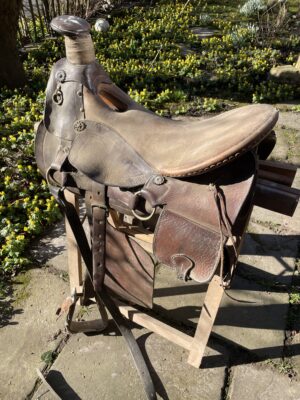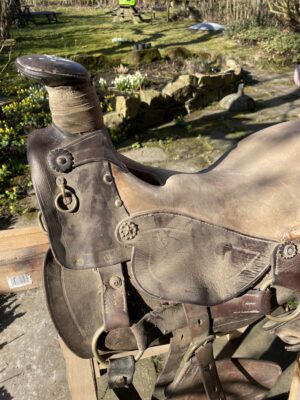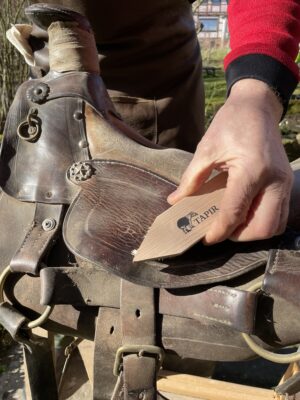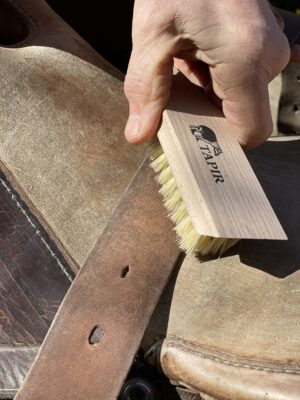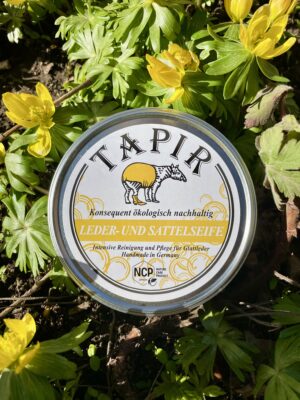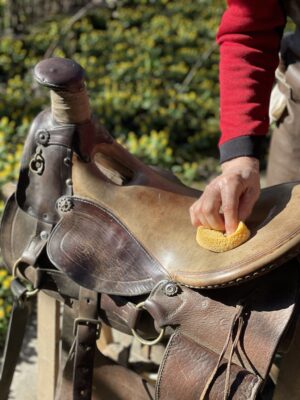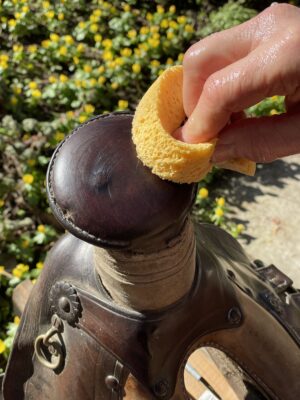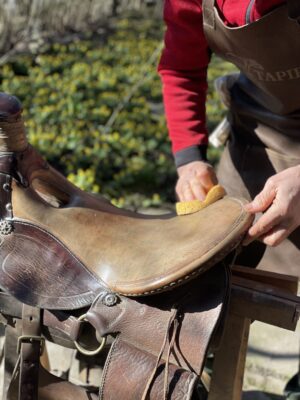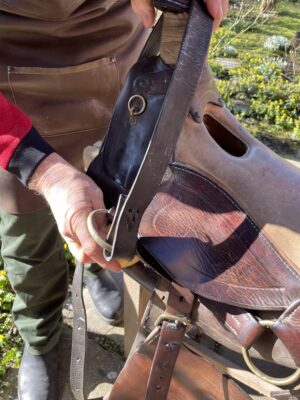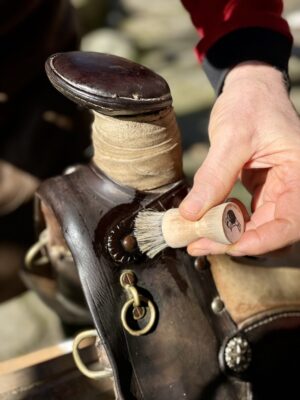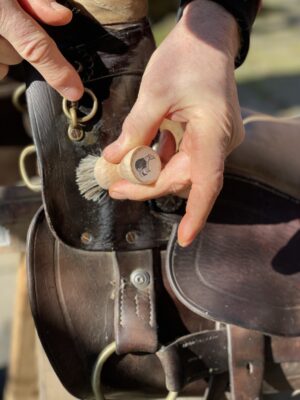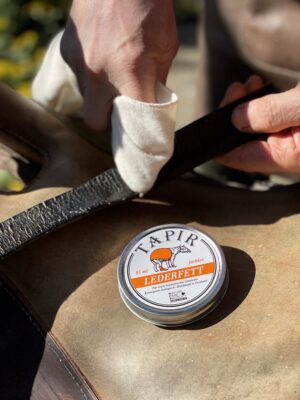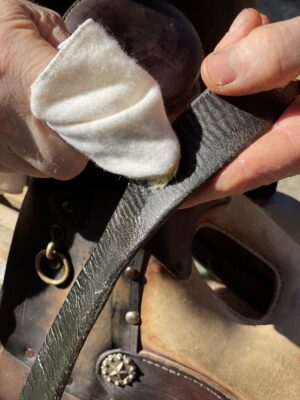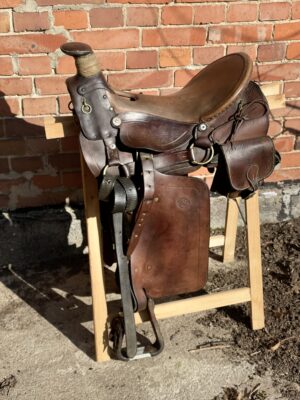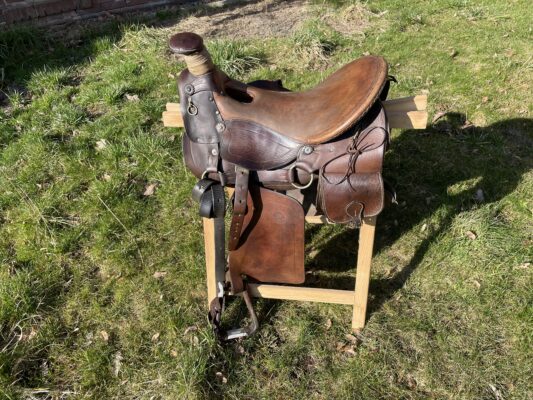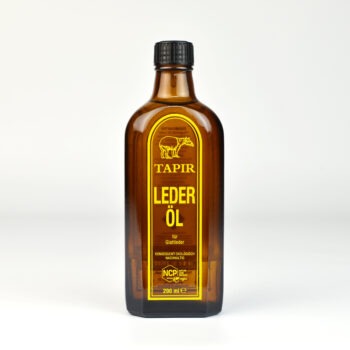Care instructions
Care with tradition: Cleaning an old western saddle with our natural care products
New life for an old western saddle
Today we took care of something very special – an old western saddle, which is no longer used on horseback, but serves as a great decorative object in front of the front door. You can clearly see the age and wear and tear of the saddle. In addition, it has not been stored optimally in recent years. The saddle is dusty and dirty. The leather is sometimes very dry and brittle and mold has already formed in isolated places. There is a lot of work ahead of us – but of course it is all the more worthwhile with such a beautiful piece.
We need the following care products from our range for cleaning and care:
- a dirt brush
- a shine brush
- Leather and Saddle Soap
- a sponge
- an application brush
- Leather oil
- Leather grease
- a cotton cloth
- a bucket of warm washing water
Here you can see how the saddle looks dusty and not used for a long time:
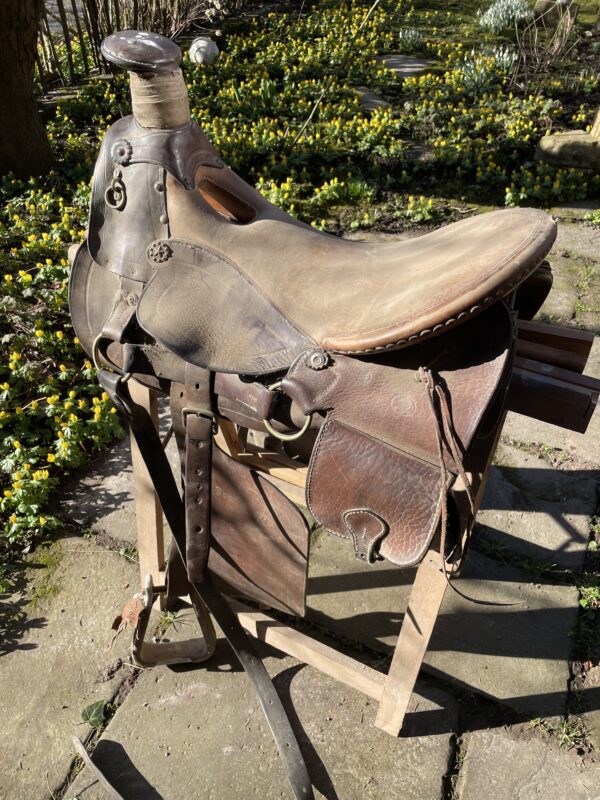
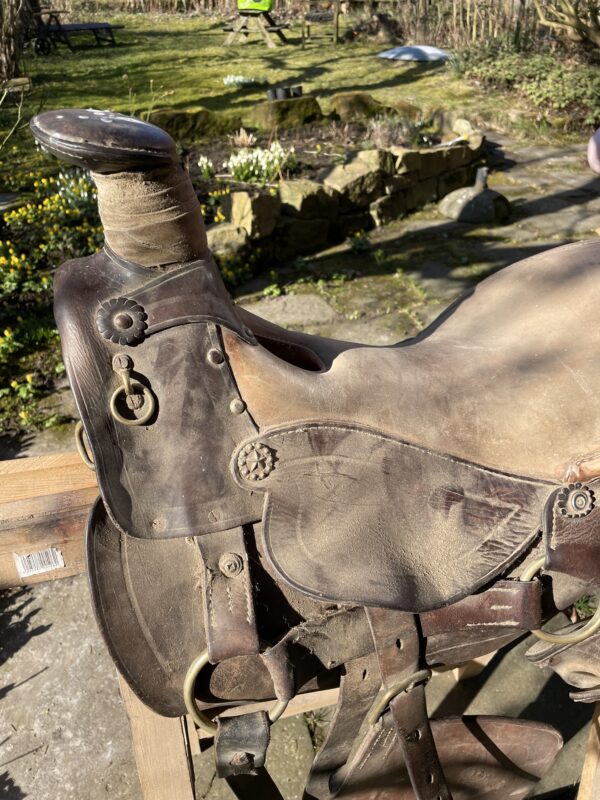
Dem Schmutz den Kampf ansagen
Um zuallererst den groben Dreck und Staub aus dem Sattel zu bekommen, kommt unsere Schmutzbürste mit den natürlichen Fibre Borsten zum Einsatz. Hiermit lassen sich Verschmutzungen ganz einfach lösen und man kommt damit auch gut an schwer zugängliche Stellen.
Durch die härteren Borsten öffnen sich die Poren des Leders und es kommt eventuell zu kleineren Kratzern auf der Lederoberfläche. Dies ist allerdings weniger schlimm als es klingt, denn dadurch kann auch der durch die spätere Feuchtreinigung der tiefsitzende Dreck besser entfernt werden und durch das Lederfett werden die Poren auch wieder geschlossen.
Man wird also am Ende also von den kleinen neuen Kratzern nichts mehr sehen. Wichtig ist es, auch nicht die Nähte vergessen abzubürsten, da sich auch hier viel Staub abgesetzt hat.
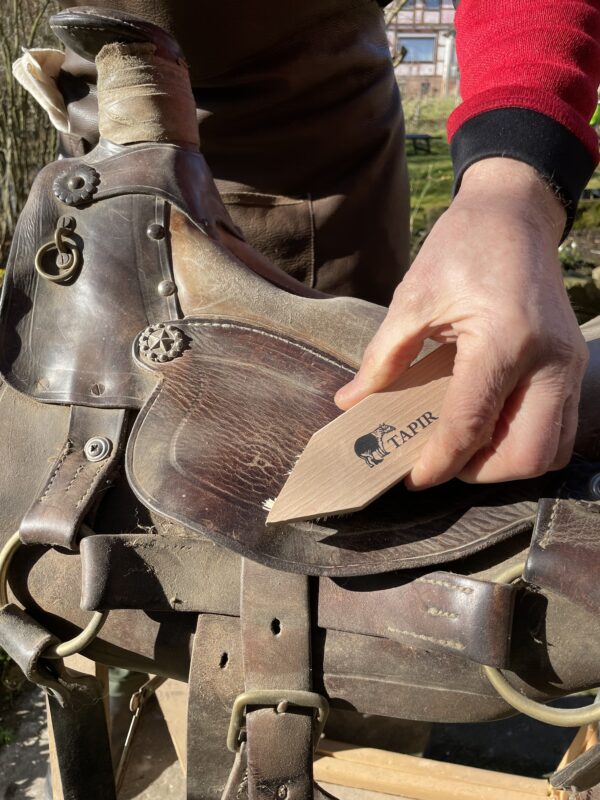
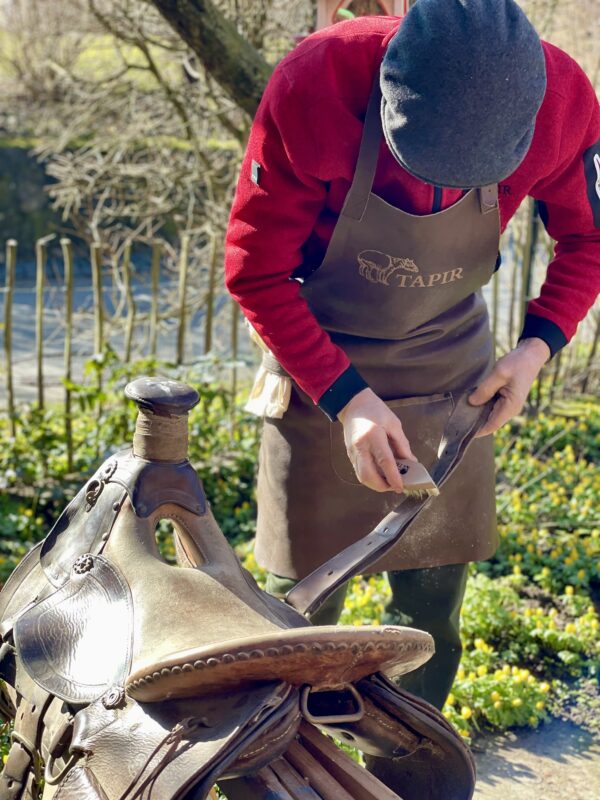
Nach der Behandlung mit der Schmutzbürste, nutzen wir für das Leder auch nochmal die feinere Glanzbürste. Man kommt gut in alle Ecken, da die Borsten auch sehr biegsam sind. Auch hier sieht man regelrecht, wie noch jede Menge Staub aus allen Ecken und Kanten des Sattels kommt.
Leider wird nun aber auch der aktuelle Zustand des Leders sichtbar- viel trockenes und sprödes Leder, teilweise rissige Stellen. Um eine reichhaltige und gute Pflege kommen wir also keinesfalls herum!
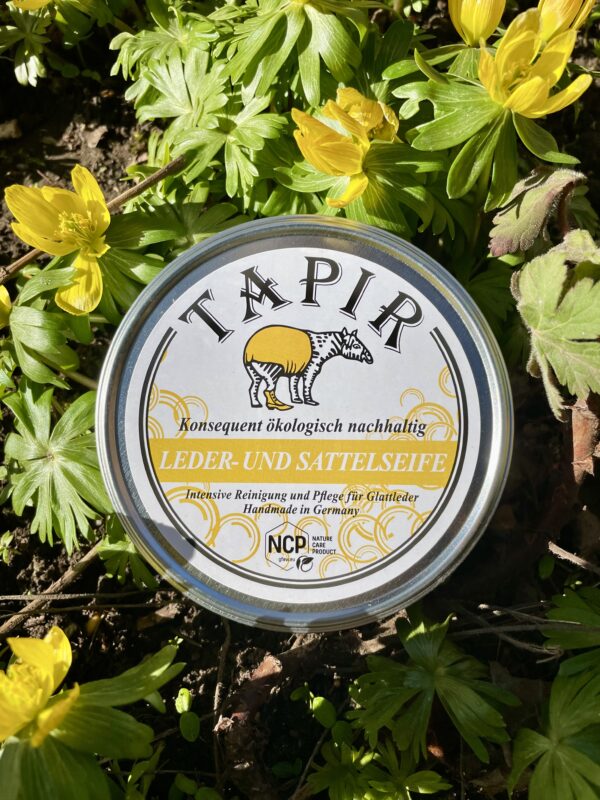
Wet cleaning including care
It continues with the leather soap , wonderfully suitable for smooth leather. This has the great advantage that it already cares for it during cleaning due to the wax content it contains. The soap is first absorbed with a damp sponge and kneaded properly to create a fine microfoam.
This is used to treat the saddle pommel first, as there is some bird droppings there. Here it is important that it is wiped off quickly, as it is corrosive and could damage the leather.
Tapir tip: Please make sure to remove not only bird droppings, but also liquids such as oil or dirty water. This means that it cannot dry in the leather and be absorbed there.
Next, the seat of the saddle is cleaned with the leather soap . In general, it is important, especially with larger objects such as our saddle, to always work on one section evenly as possible. This prevents possible staining later on. We rub the entire seat with the foam with circular movements and massage the leather soap into the leather. This is now absorbed into the interior of the leather and loosens the dirt from the depths.
The sponge has now become nice and dark, which means that the leather soap is already doing a great job. So the sponge is wrung out again, new soap is picked up and crumpled again to create microfoam. This is used to massage the seat in again until there is no more dirt on the sponge. Of course, seams must not be forgotten here.
Because if you stop cleaning too early, you would grease and impregnate all the dirt that is still stuck in the leather during later care.
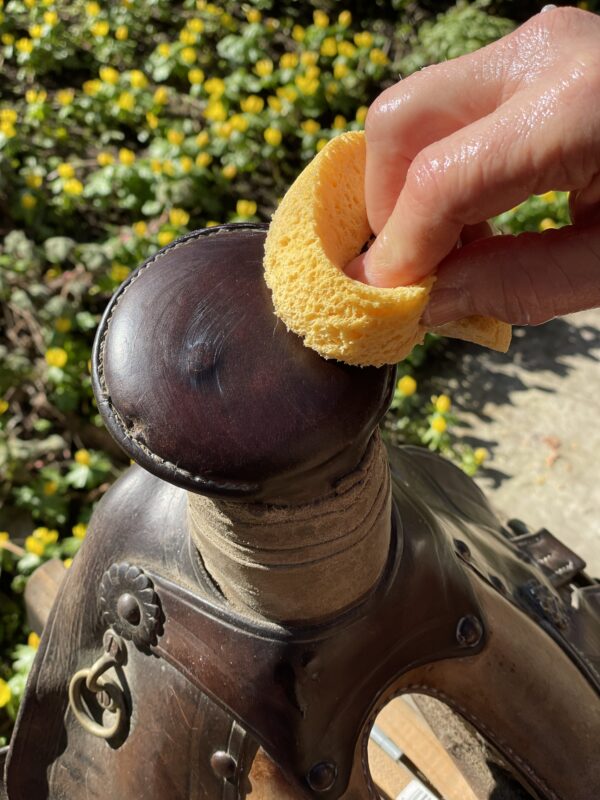
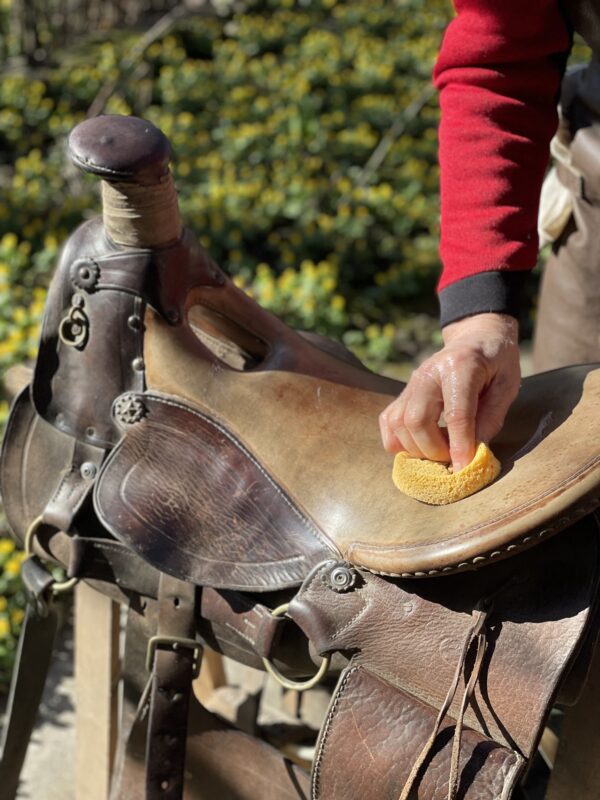
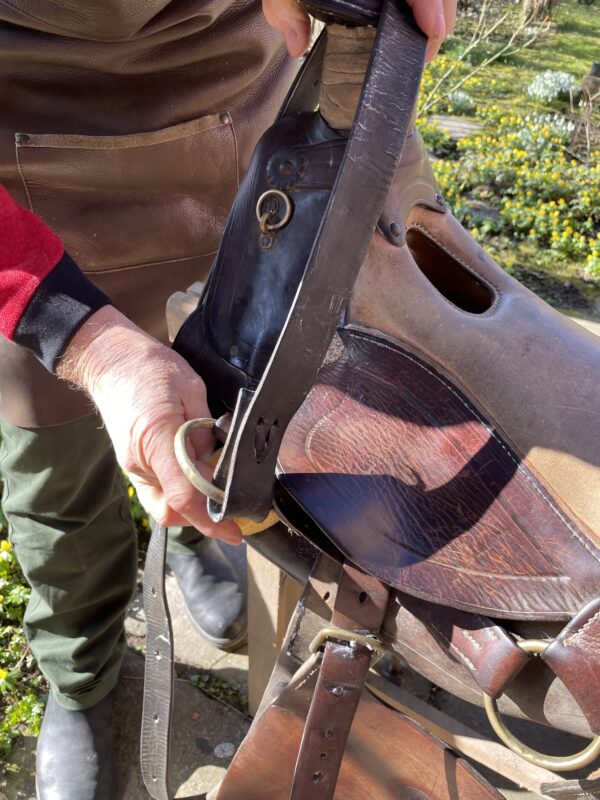
Tapir tip: To enhance the effect of the leather and saddle soap, the foam can also be given a little exposure time on the leather.
Just as described above, we now work our way over the entire leather parts of the saddle. Remember to always treat section by batch and above all not to forget seams and hard-to-reach areas. If some of the leather soap gets on the metal elements, that’s not a bad thing. They simply get a little cleaning right away.
Intensive Lederpflege mit Lederöl
Nach der Reinigung folgt nun die Lederpflege. Hierfür benötigen wir das Lederöl. Dieses eignet sich besonders gut für größere Flächen.
Tapir-Tipp: Da ein Essiganteil im Lederöl enthalten ist, eignet es sich gut für Objekte, die Schimmel angesetzt haben.
Das Lederöl muss zunächst gut geschüttelt werden. Danach wird etwas davon auf ein Baumwolltuch gegeben und wie schon bei der Reinigung Partie für Partie damit eingerieben. Das Öl dringt tief in das Leder ein, nährt es von innen und macht es geschmeidiger. Vor allem die Nähte dürfen nicht vergessen werden, da diese auch durch das Öl optimal gepflegt werden!
Mit der Auftragsbürste kann das Lederöl gut an die schwer erreichbaren Stellen aufgetragen werden.
Es ist wichtig zu erwähnen, dass das Lederöl sogar direkt auf das noch von der Reinigung feuchte Leder aufgetragen werden kann, da es dadurch schneller tief einziehen kann.
Das Einölen wird so lange auf allen größeren Flächen wiederholt, bis es nicht mehr ins Leder einzieht. Das ist nämlich ein Zeichen dafür, dass letztlich genug Öl im Leder vorhanden ist.
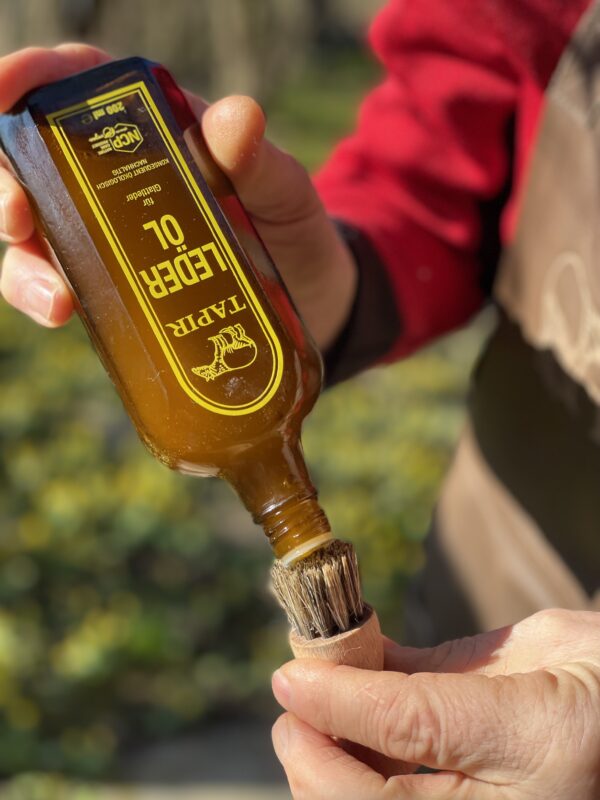
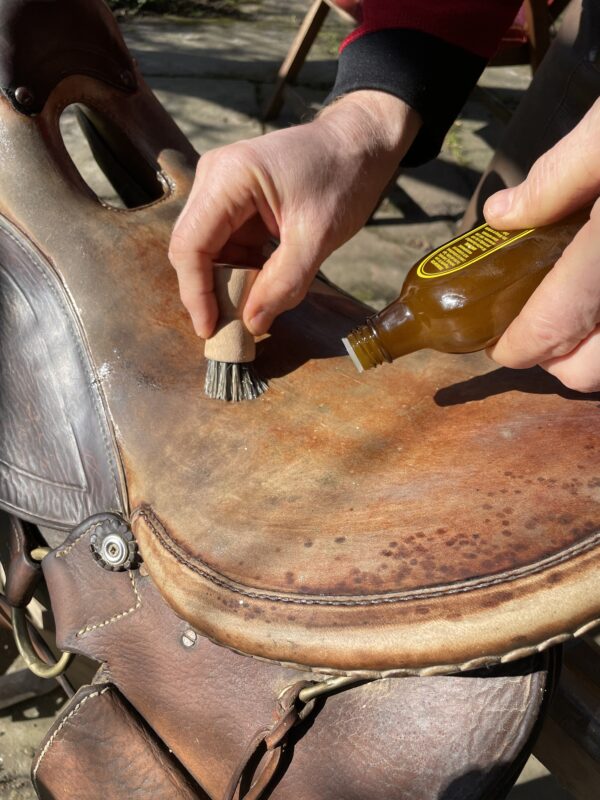
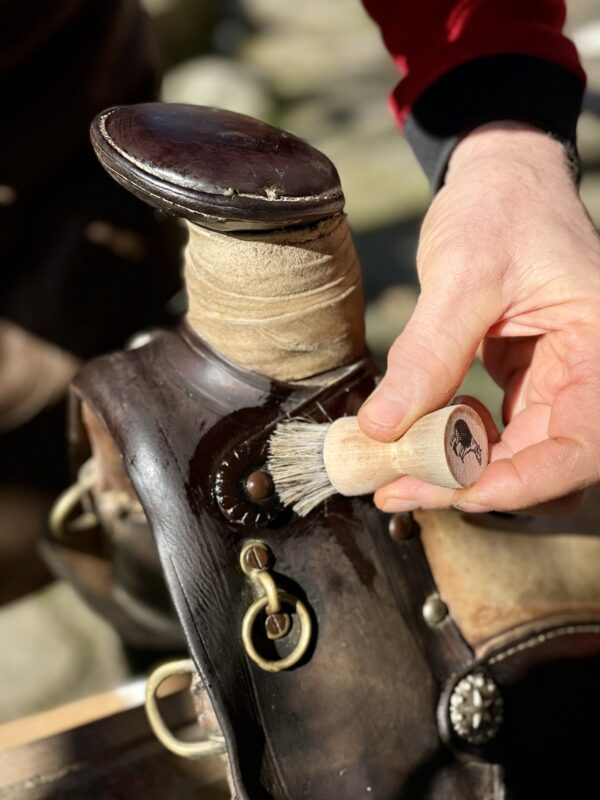
The girth is already cracked and sometimes even brittle. For this we need the leather grease so that the leather does not break even further. Leather grease has several advantages. On the one hand, it forms a protective layer on the leather surface that protects against dirt, moisture and wear and tear. It is therefore ideal for riding accessories that are regularly exposed to the weather. It also increases the durability of leather objects and is particularly suitable for heavy-duty parts such as girth straps and stirrup leathers. The leather grease moisturizes the leather on the one hand and protects it from drying out on the other hand without impairing its flexibility too much.
Tapir tip: If you care for your leather care regularly and early, such breakages in the leather will not occur in the first place.
First, some leather grease is absorbed onto the cloth and the belt is properly lubricated and massaged in. Normally, our Hubert would apply leather grease with an application brush. In this case, however, he uses a cotton cloth, as he would only distribute any dirt residue in the cracks deeper into the leather with the bristles of the brush. However, the cloth absorbs the dirt.
With the cloth, the leather grease is now nicely massaged into the leather, which absorbs the care very well and you notice how the leather becomes softer again during the massage.
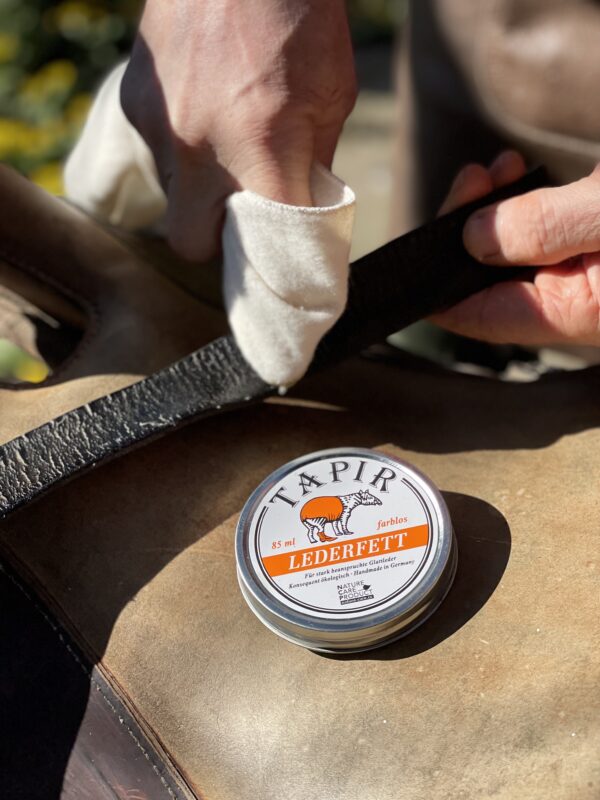
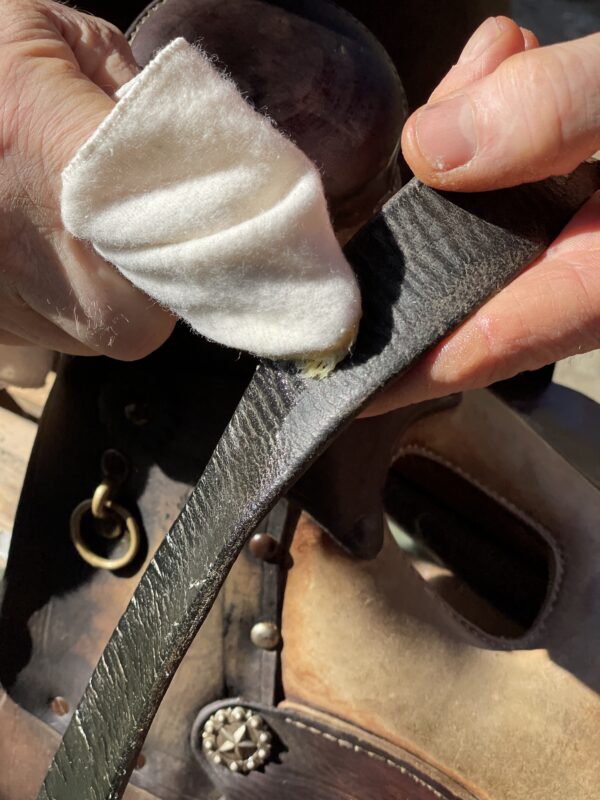
Finally, there is a small beauty step. Stains have formed on the seat due to the mold, which are now clearly visible after cleaning and care. To improve this a little visually, the application of the leather care cream in brown is suitable. This makes the leather darker and the stains are less visible. The leather is cared for in depth and gets a protective layer.
This is a step that can be done for visual reasons, but does not have to.
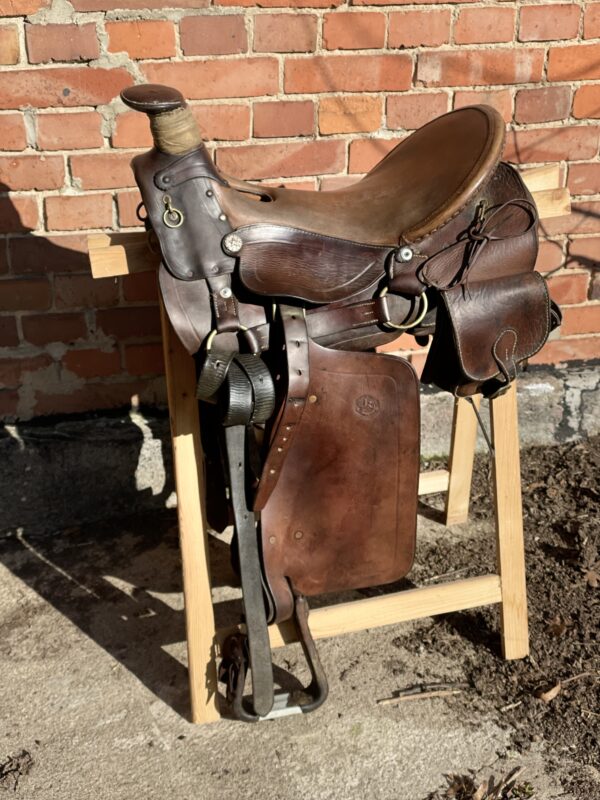
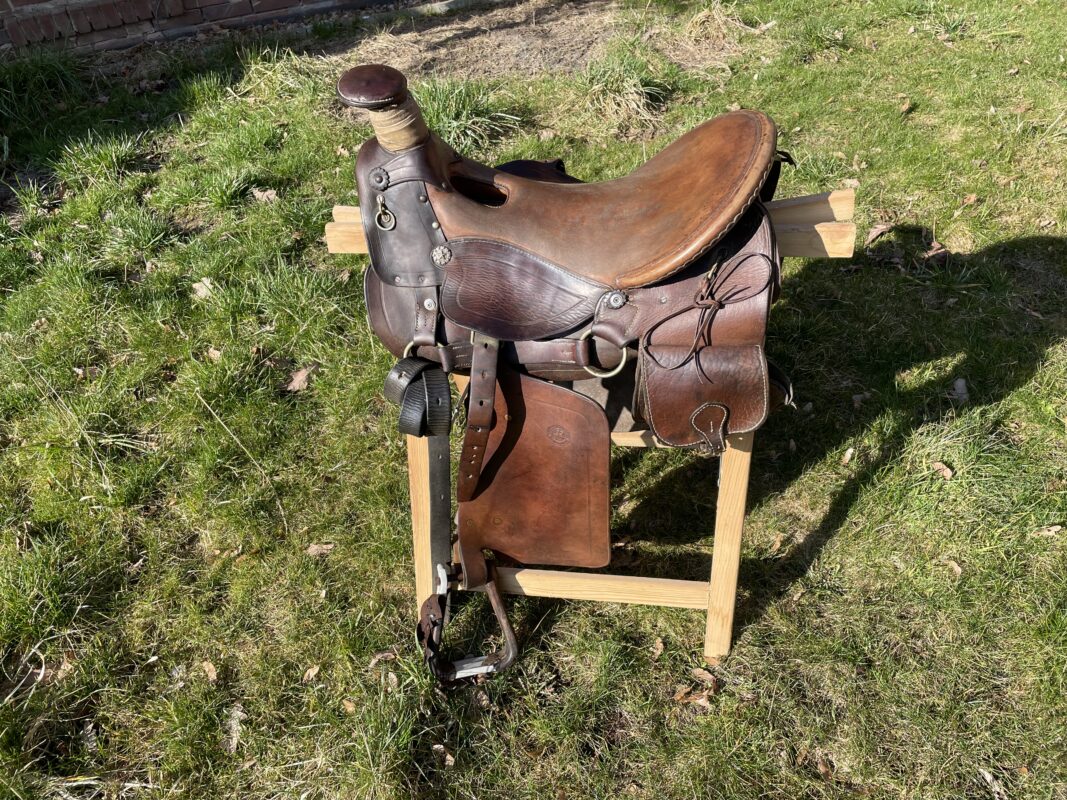
Now the saddle is ready!
If you use it on the horse again, you should consult a cobbler. But as a beautiful decorative object on the doorstep, it shows its best and brightest side again after intensive cleaning and care with Tapir!
For the cleaning and leather care of a heavily used Western saddle, Tapir recommends:
Learn how to naturally care for an incorrectly stored old Western saddle.

 Deutsch
Deutsch
